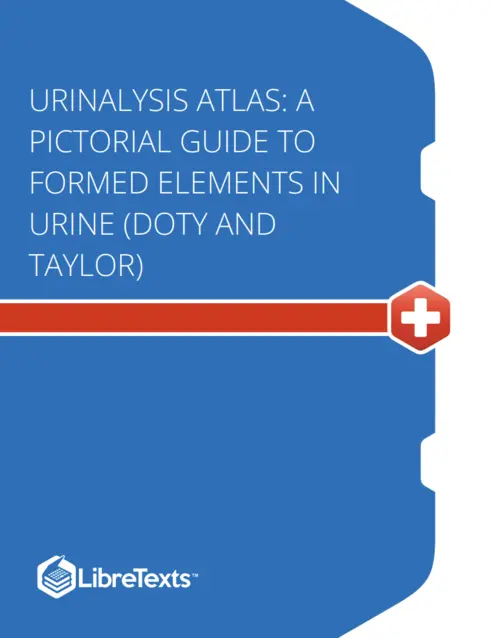
Urinalysis Atlas: A Pictorial Guide to Formed Elements in Urine (Doty and Taylor)
![]()
![]()
![]()
![]()
![]()
Dawn Taylor, Oregon Institute of Technology
Caroline Doty, Oregon Institute of Technology
Copyright Year:
Publisher: LibreTexts
Language: English
Formats Available
Conditions of Use
![]() Attribution-NonCommercial-ShareAlike
Attribution-NonCommercial-ShareAlike
CC BY-NC-SA
Reviews
Reviewed by Jasmina Cheeseman, Assistant Professor, Franklin College on 8/21/24
The book covered all UA concepts relevant to clinicians and lab staff. read more
![]()
![]()
![]()
![]()
![]()
Reviewed by Jasmina Cheeseman, Assistant Professor, Franklin College on 8/21/24
Comprehensiveness
The book covered all UA concepts relevant to clinicians and lab staff.
Content Accuracy
The book accurately ties images to clinical significance.
Relevance/Longevity
The book focuses on core concepts so annual updates are not necessary.
Clarity
It is written in an easy-to-understand manner.
Consistency
Consistent
Modularity
The sections on Amorphous Urates and Phosphates and Yeast didn't have text or pictures. The text and images were in the category prior to that, in addition to other content.
Organization/Structure/Flow
Well organized
Interface
The images were good quality
Grammatical Errors
It was quality writing.
Cultural Relevance
This section is not truly applicable.
CommentsThe book is a great quick guide that clearly identifies various components of microscopic UA. It provides succinct clinical relevance and also tips for comparing a given finding to similar findings. It conveniently then provides information on how to differentiate similar components.
Table of Contents
- Introduction
- Cellular Elements
- Casts
- Crystals
- Yeast, Parasites and Bacteria
- Artifacts and Mucus
- Resources
About the Book
In Medical Laboratory Science (MLS) Urinalysis course, students learn to evaluate normal and abnormal formed urinary elements through microscopic examination of urine sediment. They learn to interpret results and correlate with other laboratory data to identify disease. Access to quality atlases are a vital tool in the students’ learning process. Because the cost of printing pictures is so great, the price of printed atlases is high. The number of images included is limited. And many excellent atlases are now out of print.
This project seeks to eliminate those challenges for students by giving access to an Open Educational Resource (OER) atlas for urinalysis. This format is easily accessed during students’ time on campus and will continue into their careers as medical laboratory scientists. There are currently not many medical subject resources available as open resources. It is our hope that other healthcare professionals will find these resources beneficial. This project is unique in that students are the main contributors of the pictures used. While not entirely comprehensive at this point, the OER platform will allow for continual updating as new images and information become available.
About the Contributors
Authors
Dawn Taylor, EdM, MLS(ASCP)
Associate Professor, Medical Laboratory Science
Oregon Institute of Technology / Oregon Health and Science University
Wilsonville, Oregon 97070
Caroline Doty, MS, MLS(ASCP)
Associate Professor, Medical Laboratory Science
Oregon Institute of Technology / Oregon Health and Science University
Wilsonville, Oregon 97070
